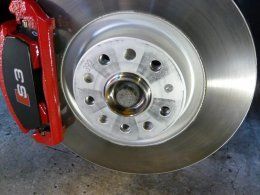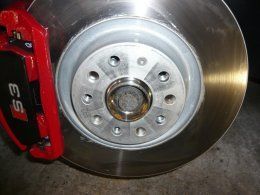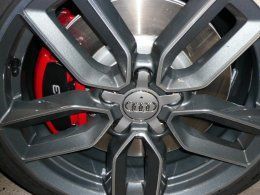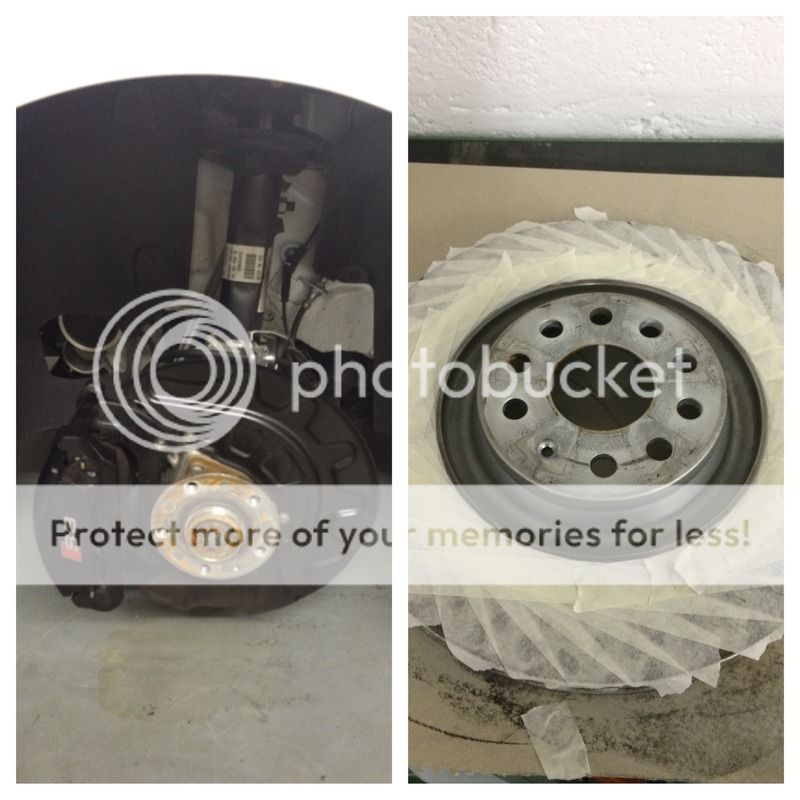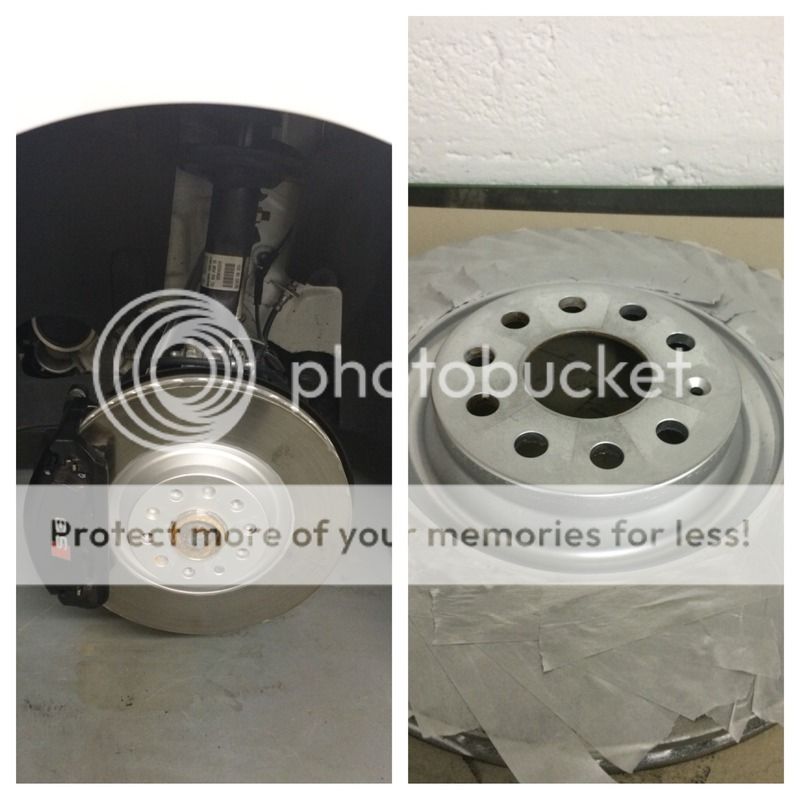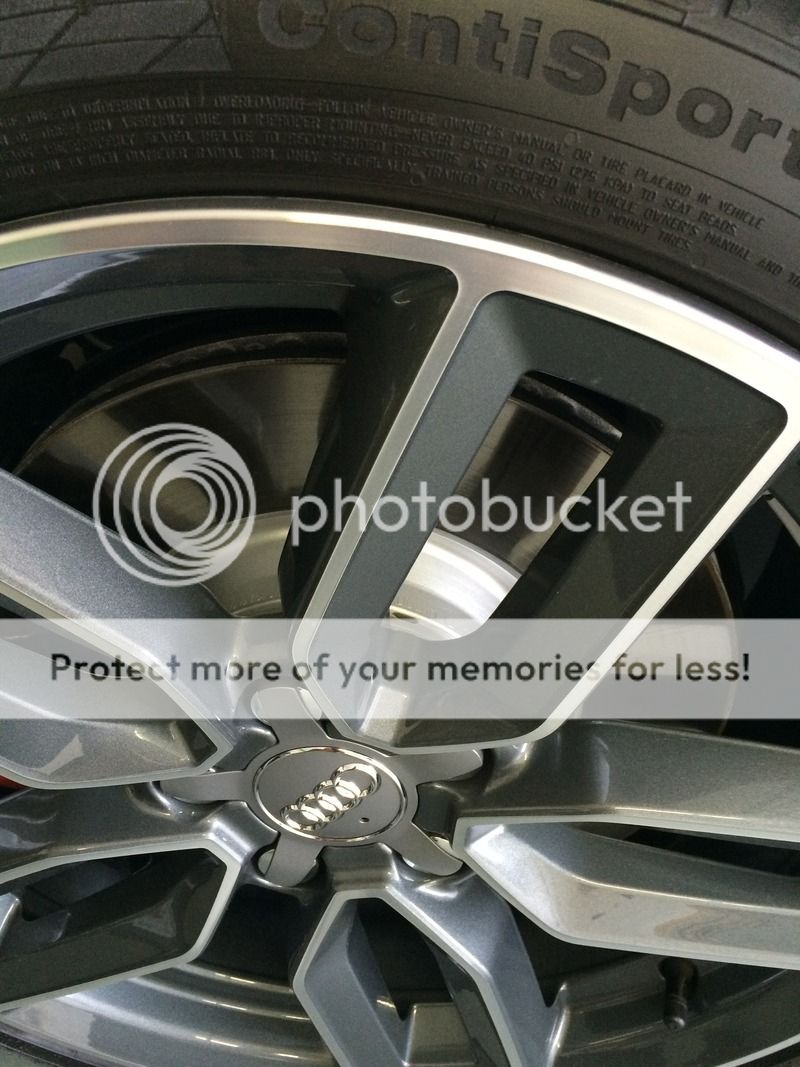Just a word of warning under no circumstances ever paint any wheel mounting surface, this can cause the wheel bolts to slacken off with potential fatal consequences
I've painted the hubs on the last half a dozen cars or so. Sadly manufacturers don't provide a coating that lasts very long. I think they don't consider rusty hubs an issue. But they can look unsightly.
This is just from my view, I'm sure others have a different regime.
I've generally used silver Hammerite smooth finish paint. It's easy to apply and had great corrosion resisting properties.
Hammerite Product Range
Most if not all Halfords stock some of the Hammerite range.
I usually paint the hubs before they go rusty but apparently the paint can be applied to rusty surfaces. But why wait?
Carefully remove the wheel, be careful on the S3 if you have 18" wheels as there's not a lot of clearance past the calipers and it is easy to cause a chip or two to the inside of the wheel.
I usually give the area to be painted a rub over with some fine wet and dry then a wipe with white spirits to clean it. Don't worry too much about a little paint on the braking surface it will be wiped off first time you apply the brake. Obviously try and avoid great dollops of paint!
Hammerite dries very quickly so its only a few minutes before you can safely refit the wheel.
But before you do it's worth applying a little copper slip or similar to the wheel mounting spigot on the hub. BUT NOT ON THE WHEEL CLAMPING SURFACE! These go rusty quite quickly and the wheel can oxidise too making life difficult if you're stuck at the side of the road with a puncture and your wheel just does not want to part company with the rest of the car! The rear hubs were already showing a little corrosion on the wheel mounting spigot and my car only has around sixty miles on the clock.
Use a torque wrench to tighten the wheel bolts, it's a 120 Nm or 88 pound feet.
The following pictures might help any one who was unsure about attempting to paint their hubs.
http://cdn.as-static.com/vb/images/styles/AnimatedArena/attach/jpg.gif
http://cdn.as-static.com/vb/images/styles/AnimatedArena/attach/jpg.gif
http://cdn.as-static.com/vb/images/styles/AnimatedArena/attach/jpg.gif
For some reason I don't seem to be able to order the pictures.......
But first one is after painting, second one is hub before paint, third is hub before paint but with wheel on and the last one is wheel refitted after painting.
.
I've painted the hubs on the last half a dozen cars or so. Sadly manufacturers don't provide a coating that lasts very long. I think they don't consider rusty hubs an issue. But they can look unsightly.
This is just from my view, I'm sure others have a different regime.
I've generally used silver Hammerite smooth finish paint. It's easy to apply and had great corrosion resisting properties.
Hammerite Product Range
Most if not all Halfords stock some of the Hammerite range.
I usually paint the hubs before they go rusty but apparently the paint can be applied to rusty surfaces. But why wait?
Carefully remove the wheel, be careful on the S3 if you have 18" wheels as there's not a lot of clearance past the calipers and it is easy to cause a chip or two to the inside of the wheel.
I usually give the area to be painted a rub over with some fine wet and dry then a wipe with white spirits to clean it. Don't worry too much about a little paint on the braking surface it will be wiped off first time you apply the brake. Obviously try and avoid great dollops of paint!
Hammerite dries very quickly so its only a few minutes before you can safely refit the wheel.
But before you do it's worth applying a little copper slip or similar to the wheel mounting spigot on the hub. BUT NOT ON THE WHEEL CLAMPING SURFACE! These go rusty quite quickly and the wheel can oxidise too making life difficult if you're stuck at the side of the road with a puncture and your wheel just does not want to part company with the rest of the car! The rear hubs were already showing a little corrosion on the wheel mounting spigot and my car only has around sixty miles on the clock.
Use a torque wrench to tighten the wheel bolts, it's a 120 Nm or 88 pound feet.
The following pictures might help any one who was unsure about attempting to paint their hubs.
http://cdn.as-static.com/vb/images/styles/AnimatedArena/attach/jpg.gif
http://cdn.as-static.com/vb/images/styles/AnimatedArena/attach/jpg.gif
http://cdn.as-static.com/vb/images/styles/AnimatedArena/attach/jpg.gif
For some reason I don't seem to be able to order the pictures.......
But first one is after painting, second one is hub before paint, third is hub before paint but with wheel on and the last one is wheel refitted after painting.
.
Attachments
Last edited:




